In the Footsteps of… Virginia Woolf
Paul Jeorrett continues his ‘Footsteps’ series, following authors with a connection to Thomas Hardy
In the very first issue of Bookylicious, I followed in the footsteps of one of my favourite authors: Thomas Hardy. In subsequent In the Footsteps of… articles, I looked at other authors, making a link (however tenuous) back to Hardy in some way. On this occasion, I want to take a look at an author I’m not sure I like all that much: Virginia Woolf.
On 23 July 1926, Virginia Woolf and her husband Leonard visited Mr and Mrs Hardy at their home in Max Gate, near Dorchester, for afternoon tea. Virginia’s diary entry a couple of days later runs, unusually, to almost six pages, and she is almost star struck for someone who could be acerbic and scathing about other writers. She describes how she tried to draw Hardy on which of his books he would take on a train (she was reading The Mayor of Casterbridge on the train to Dorchester and couldn’t put it down), but he wouldn’t be drawn. However, she was desperate to get him to sign one of his books, so he eventually found a copy of Life’s Little Ironies – and mis-spelt her name ‘Wollf’. I wonder how much that signed copy would get at auction nowadays? This is the only time that these two major authors ever met.
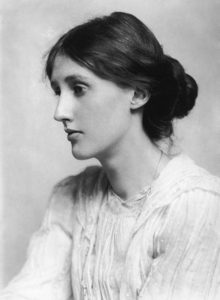
When Hardy died in 1928, Virginia Woolf wrote an essay in praise of his work, which is included in The Common Reader. She begins by saying:
‘When we say that the death of Thomas Hardy leaves English fiction without a leader, we mean that there is no other writer whose supremacy would be generally accepted, none to whom it seems so fitting and natural to pay homage. Nobody of course claimed it less. The unworldly and simple old man would have been painfully embarrassed by the rhetoric that flourishes on such occasions as this.’
Praise indeed from a writer who has also now entered the realms of British literary stardom.
Given her praise for Hardy, I often think I should love Virginia Woolf’s books more than I do. I recently read Mrs Dalloway and really enjoyed it, but The Waves and Orlando? Not so much. Despite this, on a sunny summer’s day a couple of years ago, my wife and I set out from a beautiful youth hostel (now sadly in private hands) at Telscombe, a tiny village near Lewes, East Sussex, that hasn’t changed much since the 1950s. Our walk that day took us down to the sea at Rottingdean, once home to both Rudyard Kipling and the artist Edward Burne-Jones.
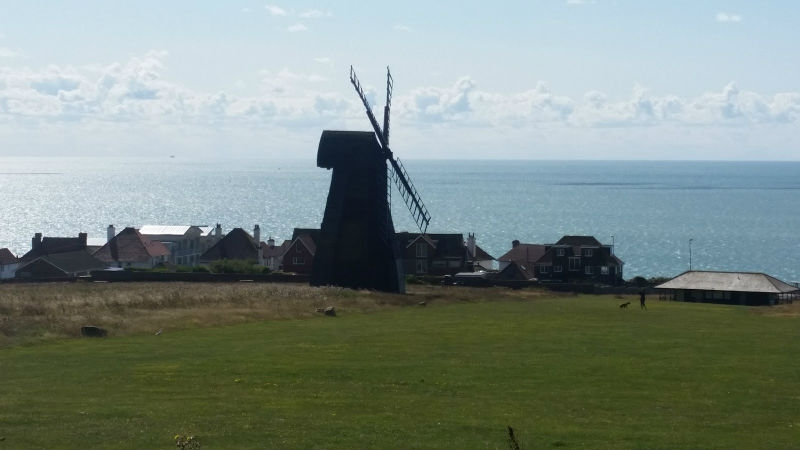
From there we went into Brighton, and took a short train ride to the tiny station of Southease, right next to the River Ouse. Walking a short distance from the station feels like stepping back in time, with St Peter’s Church at Southease having a rare Saxon round tower.
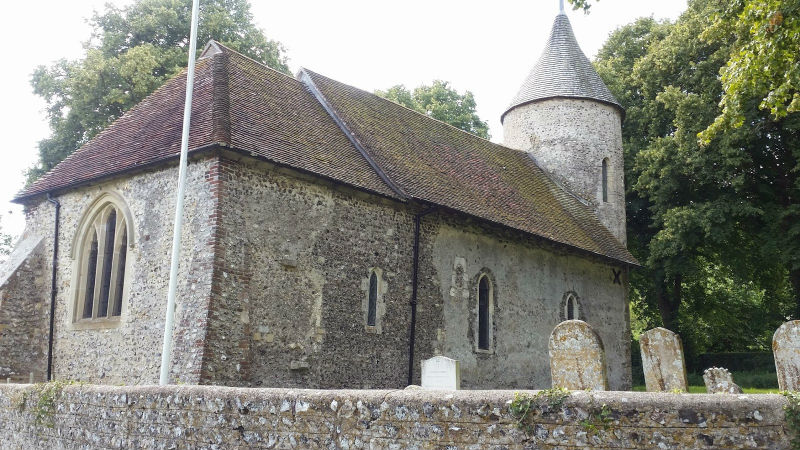
This is a place Virginia Woolf would have known well, as she and Leonard lived nearby in the Monk’s House at Rodmell, which is owned by the National Trust and open to the public. What a treasure it is as well; almost as if the Woolfs and many of the great and the good of the Bloomsbury set might step in at any time.
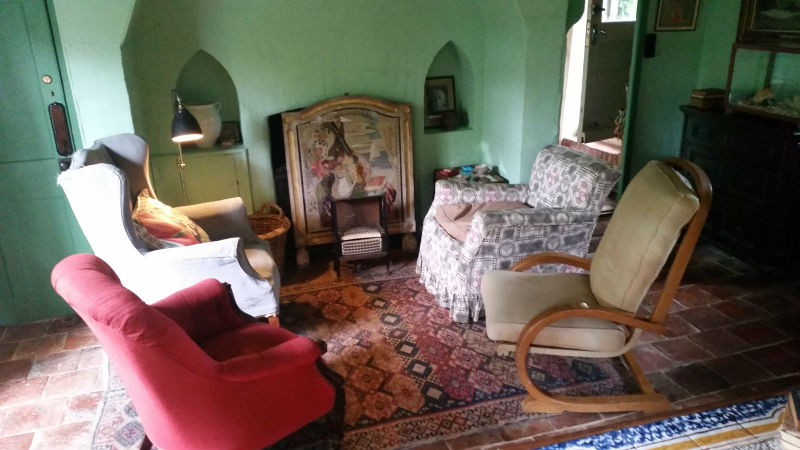
I may have said this before, but it merits saying again: sometimes you don’t really understand an author until you have visited some of the locations they lived and wrote in. This is never more true than in the Monk’s House; you can feel this from some of the photograhs. There is even ‘A Room of One’s Own’, which is a glorified garden shed/summer house, built for Virginia to work in the garden.
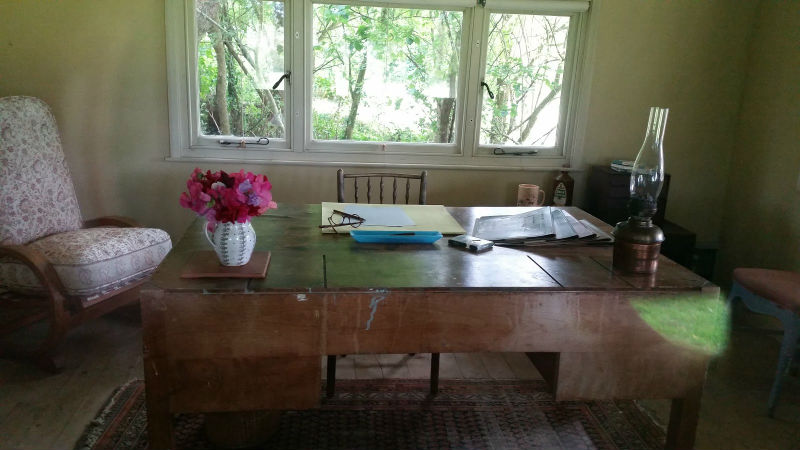
Most poignant of all is the small bedroom-come-study extension which Virginia regularly used.
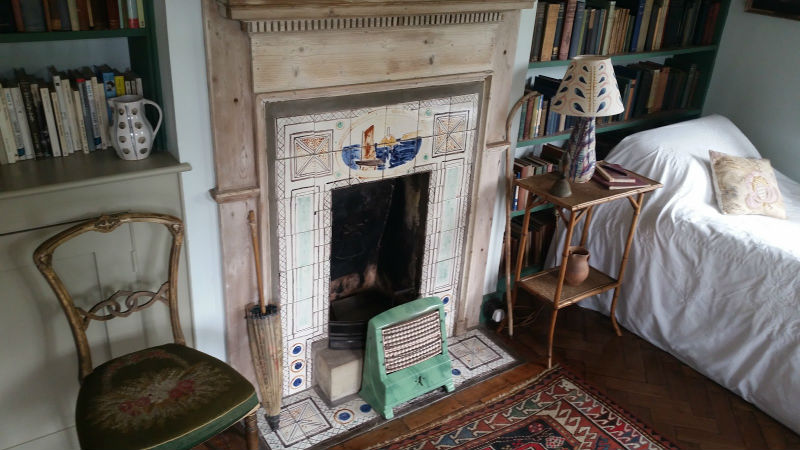
She suffered severe mental health problems throughout her life and, one day in March 1941, severely affected by the impact of the Second World War, she left this suicide note to Leonard, which begins:
‘Dearest
I feel certain I am going mad again. I feel we can’t go through another of those terrible times. And I shan’t recover this time. I begin to hear voices, and I can’t concentrate. So I am doing what seems the best thing to do. You have given me the greatest possible happiness… I can’t go on spoiling your life any longer.’
Virginia then took the short walk to the River Ouse, filled her pockets with stones and drowned herself. I had always imagined that the river was a mere stream but, seeing it, you realise that the Ouse is a fast flowing tidal estuary, and that is why her body was not recovered for over a month. On so many levels this is a tragedy, but her sister Vanessa reflected afterwards that Virginia was at risk of losing her life in this way throughout her life, and had at least managed to live long enough to leave a significant literary legacy, for which she will always be remembered. There is no spot in Poet’s Corner, Westminster Abbey, for Virginia Woolf as there was for Thomas Hardy, perhaps because she committed suicide, which in 1941 was still deemed a criminal act. Instead she was cremated, and – poignantly, and more fittingly – Leonard buried her ashes under an apple tree in the beautiful garden at Monk’s House.
After this moving walk into literary history, I read and can thoroughly recommend Olivia Laing’s To the River: a Journey Beneath the Surface, which is a reflection on her walk along the River Ouse from source to sea. I also subsequently visited an exhibition about Virginia Woolf at the National Portrait Gallery, and the accompanying book by Frances Spalding, Virginia Woolf: Art, Life and Vision, gives more detailed insights into a complex and troubled author. For an interesting insight into the Bloomsbury Group and the literary and artistic greats of the early 20th century, try Miranda Seymour’s Ottoline Morrell: Life on a Grand Scale.
As a consequence of following in the footsteps of Virginia Woolf, am I likely to read more of her novels? Well – yes, probably; it is hard to avoid such great writing. Equally interesting for me, though, are the circles in which the Woolfs moved: the Bloomsbury set and beyond. This period and the characters involved in it are endlessly fascinating, and are more colourful than any fictional characters!
© Paul Jeorrett 2017
